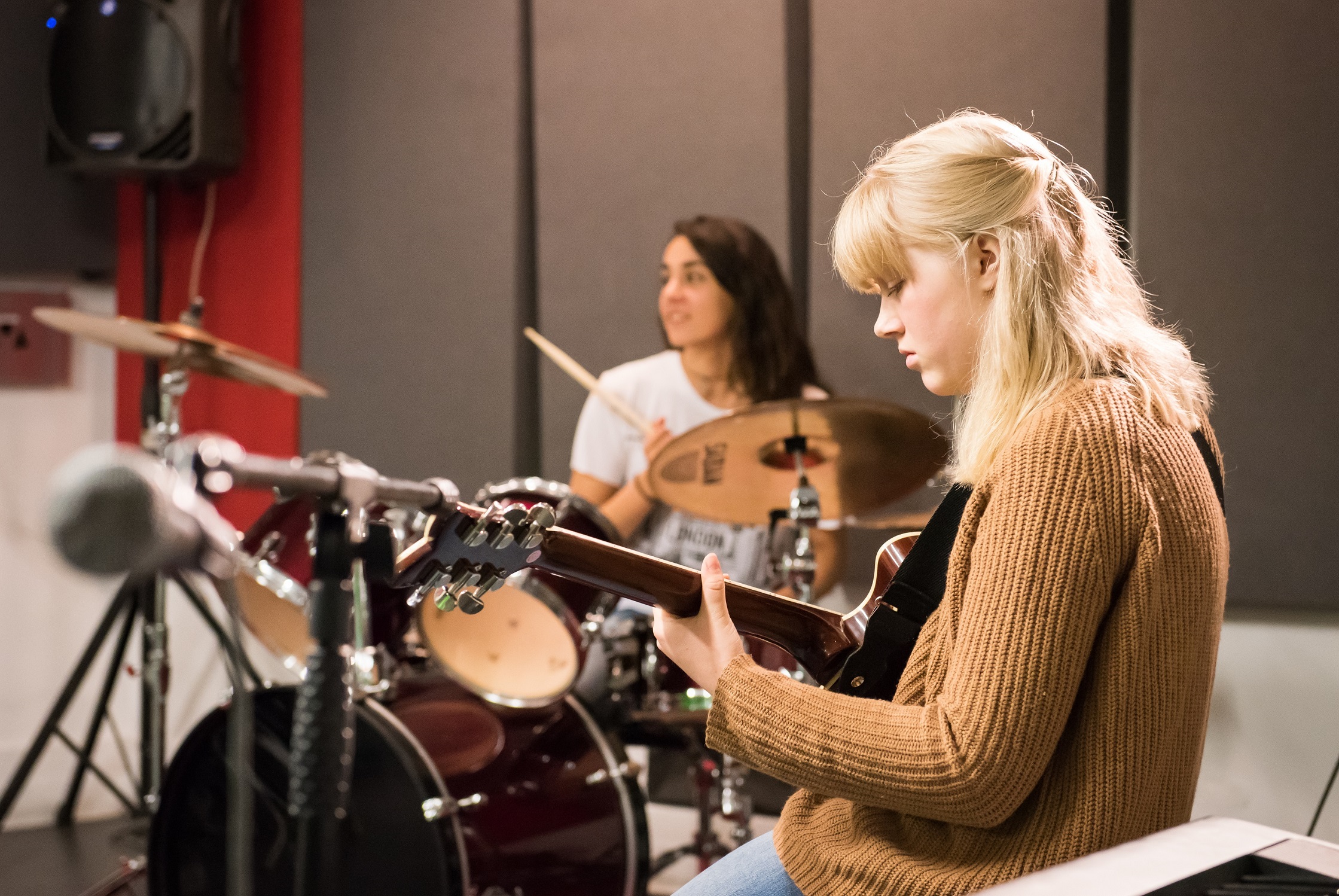The Roundhouse is a hub of inspiration in Camden where artists and emerging talent create extraordinary work and where young people can grow creatively as individuals. Susan Elkin takes us inside.
Ashley Summercorn is head of arts at Camden Centre for Learning, the borough’s provision for students whose “primary need is their social, emotional or behavioural development”. He, his colleagues and students are heavily involved with the Roundhouse, a nearby performing arts venue. “We’ve had a Service Level Agreement (SLA) with them for four years” says Ashley, a Camden “boy” himself with happy memories of seeing influential shows at the Roundhouse in his own youth.
“We have about 100 on role, aged from 11- 16” says Ashley “and on two days a week the SLA means that we team teach with Roundhouse staff. Our KS3 students do street circus and drama and KS4 does drama, film and more”
Some of Ashley’s students have such serious behaviour needs that they need two-to-one support. “The Roundhouse is very good at this” says Ashley, mentioning listening, discussion, collaboration and leadership as some of the many vital “soft” skills the scheme helps his students to develop.
The Roundhouse then is deeply committed to education, except that nobody calls it that. “Work by, with and for 11-25 year olds is our whole purpose. It underpins everything we do” says CEO and artistic director, Marcus Davey, chatting to me in the organisation’s sparkling new offices, greenly and economically constructed from 72 shipping containers. Camden Centre for Learning is just one of the many schools it has on board. The Roundhouse also works with thousands of individuals.
Marcus’s statistics are impressive. 3,000 young people, 55 per cent of them from disadvantaged backgrounds, engage in taught programmes every year. 70,000 hours of access, teaching and learning take place annually for young people who come not just from the local boroughs but from all over London. Some travel to the Roundhouse from Essex and Kent. And the venue operates at all levels.
Take Elise Cobain now 29. She went to the Roundhouse after university. She’d planned to be a meteorologist, but had always done amateur studio and radio. “I realised I wasn’t clever enough to do weather professionally so my career and my hobby changed places” she says. A one week course at Roundhouse (“The team there are brilliant”) was a turning point. It led to a traineeship and then to being headhunted by the BBC as a music producer. If you can say you’re part of Roundhouse Radio, people take notice, it commands respect,” she says. Today Cobain is Music Manager at Sony and still freelances for the BBC. She also mentors young people at the Roundhouse.
Or consider Awate (no surname: “I go by a mononym like Prince”) who is now 25. Having arrived in Camden as a refugee from Eritrea, he began making music in 2002 with any local youth project he could find. “That led me to the Roundhouse in 2006 for a two-week music production course.” Every spare minute was spent creating and sharing music from then on, including a lot of activity on the hip-hop scene doing open mic spots all over London.
Since then Awate has used and developed the contacts he began to find at the Roundhouse. “You need information and the Roundhouse is terrific because everyone is so committed.” Now a 2016/17 Roundhouse resident artist, he has access to facilities, resources and people. Last year he worked on Penny Woolcock’s Utopia installation and curated a night of his own as one of the Roundhouse’s Live Lates.
“Yes, the arts and what we do are transformative and we see the results all the time” says Marcus who has been in post since 1999 and has a background in classical music. “Our range is huge. Young people come to create drama, play in our orchestra, sing in our choir, write poetry, learn circus skills, apply digital technologies to the arts and much more. Often they then realise that they prefer it to what they were doing before. We have a 75% success rate in getting disengaged youngsters back into education or work.”
Marcus was appointed just three years after Sir Torquil Norman bought the magnificent 1847 railway repair shed, and decided to recreate it as a real arts centre. It was near derelict at the time after some decades of housing experimental theatre and other art forms. Marcus oversaw the re-opening of the Roundhouse as a fully developed venue and centre of engagement in 2006. He took possession of the new offices, round the back, last year. The iconic circular building has studios, teaching rooms and facilities in the undercroft beneath the main space.
The centre’s 1800 young members can access these to work on their own projects – with high level support from Roundhouse staff. At a production of Monteverdi’s Orfeo in collaboration with Royal Opera House last year, everyone one involved apart from cast and orchestra was a Roundhouse young participant.
Roundhouse staff like catchphrases. One such is “More than just a great venue” which is emblazoned on a lot of their publicity material to encourage young people to make the most of what the Roundhouse can offer – and charges are kept at nominal levels. Membership, for example, costs £20 per year. Elise Cobain paid just £10 for the course she did. “We use the surplus from imported gigs and shows” to fund our main work,” says Marcus.
“Creativity transforms lives” is another Roundhouse slogan but actually these soundbites are more like mission statements and missions are being fulfilled. The Roundhouse effect is clearly ensuring better futures for many young people.
IMAGE: Roundhouse Summer Projects by Ellie Pinney



